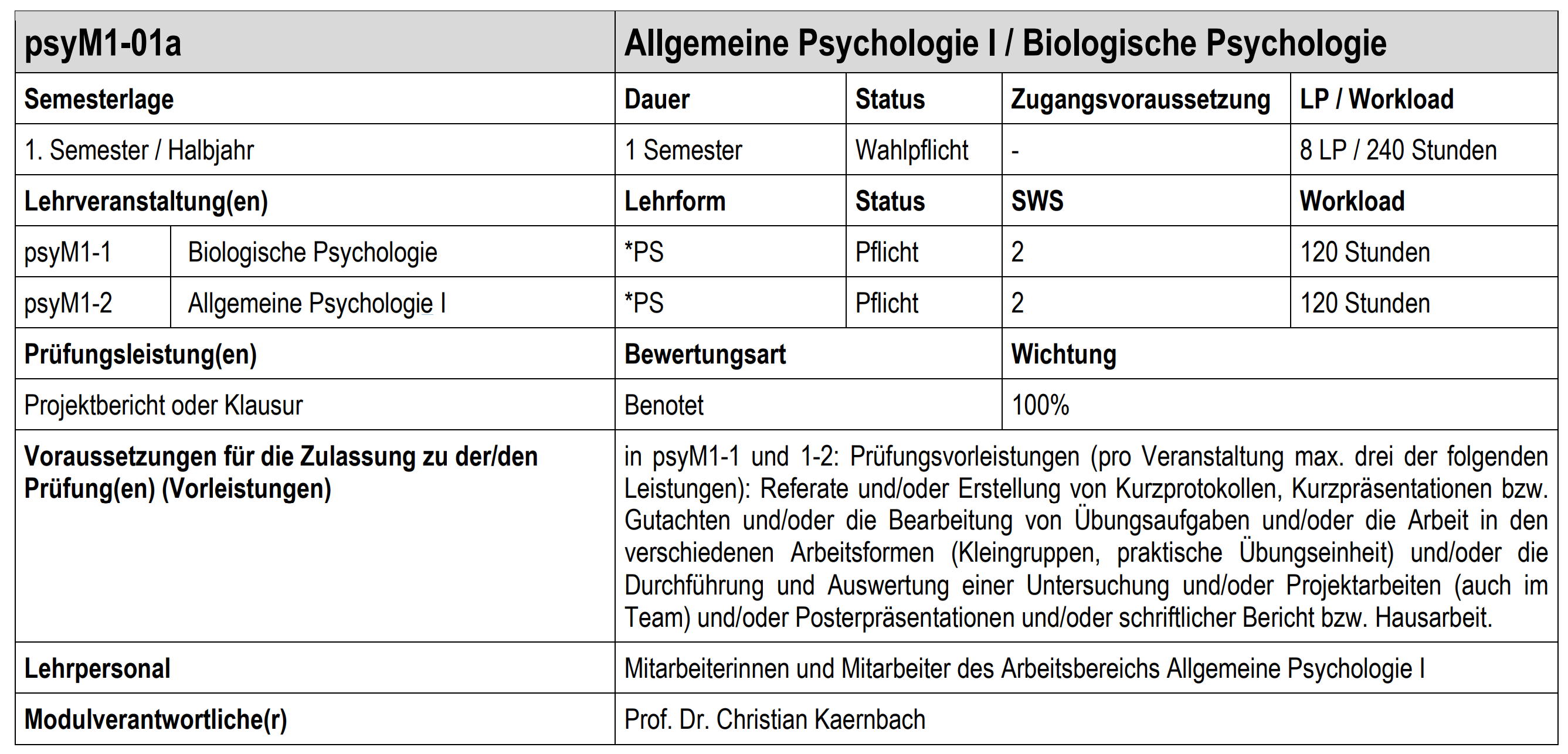s00: Introduction
Contents
s00: Introduction#
Welcome to the hands on materials for psyM1-2 (practical part). This notebook will guide through getting the tools you will need for data science related tasks.
Prüfungsordnung#
First things first, why are you here and what are you doing? A closer look in the Prüfungsordnung shed some lights on everything.

Another excerpt from the Prüfungsordnung:
Als zentrales Ziel des Masterstudiengangs sollen Voraussetzungen für das selbstständige und eigenverantwortliche Arbeiten in den Berufsfeldern der Psychologie geschaffen werden. Dabei werden auch Transferkompetenzen zur Verbindung wissenschaftlicher Erkenntnisse mit praktischen Handeln erworben.
- FPO Psychologie M.Sc. 2020 - Seite 3/17
Therefore this seminar will provide you with some hands-on tools of psychological competence with a wide variety of used cases in the real-world.
Tools#
These tutorials presume that you do already have some basic knowledge of programming.
If you are somewhat unfamiliar with Python, we will make sure you feel comfortable with Python by the end of the seminar.
The following are a series of tools that you will need for this class
Anaconda
git & GitHub Desktop
Today we will go through them and how to set them up.
Already have Python?
If you are running code locally, we recommend you install a new version of Python with Anaconda, as described below
If you are on Mac, you have a native installation of python. This native installation of Python may be older, will not include the extra packages that you will need for this class, and is best left untouched.
Downloading Anaconda will install a separate, independent install of Python, leaving your native install untouched.
Windows does not require Python natively and so it is not typically pre-installed.

Anaconda itself is a distribution, meaning that is a version of Python with a collection of packages that are curated and maintained together.
Using a pre-built distribution is useful, as it comes with the packages that you need for data science.
Anaconda also comes with conda, which is a package manager, allowing you to download, install, and manage other packages.


Git & GitHub are not the same thing, though, in practice, they are commonly used together, whereby git is used as a tool to version control code and manage multiple copies stored across your computer, as well as on remote repositories that are stored on Github.
Prerequisits#
Throughout these tutorials (as seen today), you will see colored ‘alert’ text:

